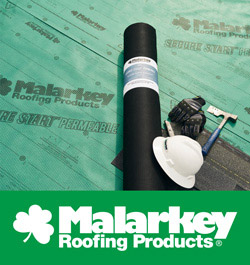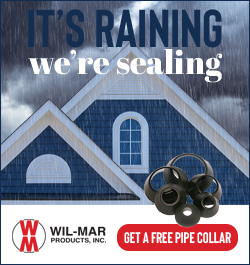Why Ventilate?

By George G. Allaster, Marco Industries.
Over the years, I have been asked that question a thousand and one times! Why ventilate?
Editor's note: This article helps homeowners and those new to the industry clearly understand the reasons why ventilation is critical to the performance of a roofing system and the interior comfort of a home.
I think because you cannot see air, but you can feel air, that homeowners do not understand the damage air can cause to the roof structure and insulation.
Let’s discuss AIR. AIR is a jello. It supports moisture, heat, snow, rain, dirt, dust, and thousands of different gases. Yet, you can’t see it. Something you can’t see makes it difficult for homeowners to understand WHY they should ventilate their attic and spend the extra money to safeguard their greatest asset … their home!
Summer-Why Ventilate?
During the summer daylight hours the attic heats up because of radiant heat rays from the sun. Again, something you can’t see … Why Ventilate … the basic reason is to have a cooler attic!
When a homeowner goes to bed at 10 pm at night, the attic, without proper ventilation is the hottest and some attic temperatures raise to 140°. The roof sheathing temperature raises to 175°. During the night, the outside air temperature drops and the absence of sunshine permits the attic to re-radiate or conduct stored heat to the atmosphere.
However, an unventilated or poorly ventilated attic is not able to lose all of its stored heat in this manner.
The problem is heat build-up over a period of days and this can cause:
-
Shingle problems!
-
Plywood deck sheathing problems!
-
Truss and structure problems!
-
Insulation problems!
Good ventilation minimizes the above problems.
All shingle manufacturers state and publish on all their literature and warranties to ventilate to FHA ventilation minimum standards.
The Plywood Association recommends ventilation to stop premature buckling and plywood delamination.
Excessive heat build-up causes truss and structure problems with nails popping, breaking, and rusting.
Insulation
Homes built today are being built with greater R-value insulation. Why ventilate? Without it, today’s insulation absorbs and holds more of the heat build-up in the attic during the day, making it less likely that all of the heat of the attics will be removed into the cooler nighttime air. Residual stored heat can build up over a period of hot days, maintaining the insulation at a higher temperature and increasing the heat radiation down to the rooms below.
Heat radiates through the ceiling to persons or objects down below, especially into the upstairs bedrooms.
Winter- Why Ventilate?
The cold months of the year bring in a major different problem. The air inside the home is warmer and holds more water vapor than colder, dryer air present in the attic. As a matter of fact, each person in the household generates over a gallon and a half of water into the air each day.
This moisture raises with the heat and penetrates the ceiling into the cold attic … remember, heat rises … these two elements, cold air and hot air, come together and the result is moisture!
Moisture is a serious problem in attics without proper ridge ventilation. This moisture drips down from the attic trusses and sheathing onto the insulation, causing the R-value to drop dramatically. As a consequence, heat loss through the ceiling increases and more energy is required to maintain the home at a comfortable temperature.
As with heat build-up in summer, wintertime attic moisture is removed by ventilating the air! The most effective system is one that moves the greatest volume air through the attic space: ridge ventilation.
Remember, you must have intake (soffit vents) and exhaust (ridge vents) to properly ventilate the home!
In conclusion, Why Ventilate?
-
A cooler attic in the summer!
-
A dryer attic in winter!
Learn more at www.marcoindustries.com.
Original article source: Marco Industries























Comments
Leave a Reply
Have an account? Login to leave a comment!
Sign In